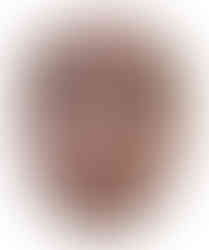GIFs: Cinema 4D self-learning & Facial Perception Research
- Jiaxin [Lydia] Wang
![Writer: Jiaxin [Lydia] Wang](https://static.wixstatic.com/media/fd12c1_a84c5ccf1b3e4efb8e75846c079f4c37%7Emv2.jpg/v1/fill/w_32,h_32,al_c,q_80,enc_avif,quality_auto/fd12c1_a84c5ccf1b3e4efb8e75846c079f4c37%7Emv2.jpg)
- May 6, 2018
- 2 min read
Updated: May 10, 2018
3D Modelling
Three-dimensional software is such a powerful tool. There are so many things need to be learnt and numberless tutorials about Cinema 4D on 'Lynda.com' and YouTube. Due to my previous experience of 3Dmax, I decided to start with 3D modelling.
With the tutorial, 'Cinema 4D - Robot modelling - Part1 (2017)', the first step I took was putting my photo as the background, slowly extruding the plate to build a polysurface and moving each point to the right place.

After modelling the face, I chose its rim, extruding and adding the ‘cloth surface’ feature to make a helmet for it.

Human face UV Mapping
Two basic elements of 3D animation are modelling and texture. For me, the texture is the most difficult part in making this GIF. In order to get accurately map locating, I chose the BP UV Edit mode, referring to the tutorial, 'Unwrapping UVs PartV – AddingTextureMaps (2013)' while many unexpected problems occurred.
Step 1: BP UV Edit
Following the tutorial step by step, I imported my self-portrait and succeeded in matching each part of my face to the mesh with the magnet tool in the BP UV Edit mode.
Step 2: Facial Perception Research
Whilst the strangest thing happened, no matter how I change the positions of the points on the mesh, the face doesn’t look like me. The eyes, the mouth, the nose and all of the map comes from my photo but it is not me.

Then I began my research about facial identity. The article which woke me up was ‘Cognitive and Computational Approaches to Face Recognition (2011)’. It listed three computational challenges that will influence the understanding of human face representations, and the second one is:
From this complex input, which the human visual system likely processes in a highly different form, we are able identify a “hooked nose”, wide-set eyes, and a “perky” face. (O’Toole, 2011)

Cognitive and Computational Approaches to Face Recognition (2011)
Step 3: Change the facial structure
After comparing the shape of my own face with the 3D model, I eventually realized the forehead and the cheekbone of my model were so high that stretched my eyes to a wrong shape. I then applied a slight adjustment to these two parts and there comes a miracle. It’s my face.
Bibliography:
3D Passion (2017) Cinema 4D - Robot modeling - Part1 (Head), Available at: https://www.youtube.com/watch?v=OmzII6pFfCk&t=144s (Accessed: 2 May 2018)
Lynda.com (2018). Lynda: Online Courses, Classes, Training, Tutorials. Available: https://www.lynda.com/ (Accessed: 2 May 2018)
O’Toole, A.J. (2011) Cognitive and Computational Approaches to Face Recognition, Oxford Handbook of Face Perception, p.121.
Wil McDaniel (2013) Unwrapping UVs PartV – AddingTextureMaps, Available at:
https://www.youtube.com/watch?v=kGE2AVqj4ug&t=263s (Accessed: 2 May 2018)












Comments